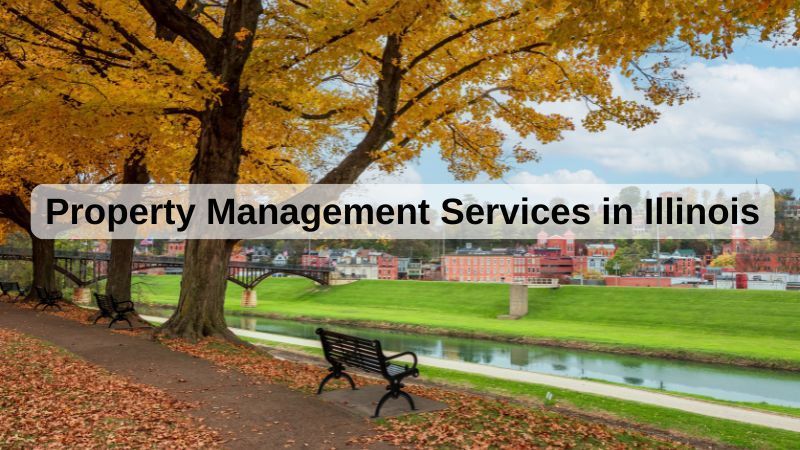Elmhurst, IL: New Construction Home Insights

Buying a new construction home is a significant, exciting step, and Fly Guy Moving is here to help you every step of the way. Our full-service moving company in Elmhurst, IL, specializes in making the transition to your new home as smooth as possible. This guide will walk you through everything you need to know about new construction homes in Elmhurst, IL so you can move smart and stress-free.
Why Choose New Construction Homes in Elmhurst, IL?
When we talk about new construction homes, we mean homes that are built from scratch, offering a new start and a clean slate. These homes have never been lived in, meaning you'll be the first to make memories there. They come equipped with the latest in modern design, materials, and technology.
The Ideal Location
Elmhurst, IL, is known for its charming neighborhoods, top-rated schools, and close-knit community feel. Situated just outside of Chicago, it offers a blend of suburban tranquility and urban convenience.
- Population: 46,000
- Schools: Highly-rated public and private schools
- Amenities: Abundant parks, recreational facilities, shopping centers, and dining options
Community and Neighborhood Appeal
Elmhurst boasts a diverse range of family-friendly neighborhoods. The city has invested in community amenities like public parks, libraries, and fitness centers. Here, neighbors know each other, and the sense of community is strong.
The Benefits of New Construction Homes
One of the standout features of new construction homes is their modern design. These homes are designed with contemporary lifestyles in mind, making them both stylish and functional.
Architectural Styles
New construction homes in Elmhurst, IL, come in a variety of architectural styles, including:
- Traditional: Classic homes with gable roofs and symmetrical facades.
- Contemporary: Sleek, clean lines with expansive windows and open floor plans.
- Craftsman: Attention to detail with handcrafted woodwork and extensive use of natural materials.
Customization Options
A significant benefit of buying a new construction home is the ability to customize it to your liking. Many builders offer various customization options such as:
- Floor Plan Adjustments: Tailor the layout to fit your needs.
- Interior Finishes: Choose from a variety of paint colors, flooring, and countertops.
- Exterior Features: Select your preferred type of siding, roofing materials, and landscaping.
Lower Maintenance Costs
New construction homes typically offer lower maintenance costs compared to older homes. This is due to:
- New Appliances and Systems: Brand-new HVAC systems, plumbing, and electrical systems mean fewer repairs and longer warranties.
- Modern Construction Standards: Up-to-date construction methods make new homes more resilient to wear and tear.
Builder Warranties
Many new construction homes come with builder warranties covering structural components, appliances, and other significant aspects of the home. This can greatly reduce unexpected expenses.
What to Look for in a New Construction Home
Location and Community
When investing in a new construction home, the location and community are just as important as the home itself.
Proximity to Schools, Shopping, and Parks
Elmhurst, IL, is known for its excellent schools, convenient shopping centers, and beautiful parks. Here are some key points to consider:
- Schools: Ensure the new home is in a district with highly rated schools. Consider both public and private options.
- Shopping Centers: Check for nearby grocery stores, malls, and specialty shops.
- Parks and Recreation: Look for proximity to parks, playgrounds, and recreational facilities.
Community Amenities
New construction developments in Elmhurst often offer various community amenities, such as:
- Clubhouses: Spaces for social gatherings and community events.
- Swimming Pools: Shared pools for relaxation and exercise.
- Fitness Centers: Fully equipped gyms for residents.
- Walking Trails: Scenic trails for walking, running, or cycling.
The Process of Buying a New Construction Home
Financing Your New Home
Understanding your financing options is the first major step in buying a new construction home. This can help you set a realistic budget and streamline the buying process.
Understanding Mortgage Options
Several mortgage options are available for new construction homes:
- Conventional Loans: Standard mortgage with fixed or adjustable interest rates.
- FHA Loans: Government-insured loans for buyers with lower credit scores or smaller down payments.
- VA Loans: Loans for veterans with favorable terms, including no down payment.
- Construction Loans: Short-term loans used to finance the building of the home, converting to a mortgage after completion.
Pre-Approval Process
Getting pre-approved for a mortgage gives you a clear picture of your budget:
- Gather Financial Documents: Tax returns, bank statements, pay stubs.
- Credit Check: Ensure your credit score is in good standing.
- Meet with Lenders: Find a mortgage lender to get pre-approved.
- Receive Pre-Approval Letter: Defines the mortgage amount you're eligible for.
Choosing a Builder and Floor Plan
Selecting a builder and floor plan is critical for ensuring your new home meets your expectations.
Steps to Select a Builder
- Research: Check builder websites, read reviews, and visit completed projects.
- Interview: Meet with potential builders to discuss your needs and expectations.
- Compare: Review contracts, warranties, and service packages from different builders.
- Decide: Choose the builder that aligns best with your vision and budget.
Deciding on the Right Floor Plan
Factors to consider when choosing a floor plan include:
- Family Size: Number of bedrooms and bathrooms.
- Lifestyle: Open floor plans versus compartmentalized layouts.
- Future Needs: Potential for expansions or modifications.
Construction Timeline and Inspections
Understanding the construction timeline and inspection process can help in planning your move.
Typical Construction Phases
- Pre-Construction: Site preparation, permits, and groundwork.
- Foundation: Pouring the foundation and framing the structure.
- Framing: Building the skeleton of the home.
- Exterior Work: Roofing, windows, siding.
- Interior Work: Plumbing, electrical, drywall, and finishes.
- Final Touches: Painting, flooring, and final inspections.
Importance of Inspections
Regular inspections ensure quality and adherence to building codes:
- Foundation Inspection: Checks for proper installation and potential issues.
- Framing Inspection: Ensures structural integrity before drywall is installed.
- Final Inspection: Comprehensive review before moving in, covering plumbing, electrical, and overall safety.
Common Myths about New Construction Homes
Myth: New Homes are Always More Expensive
One common misconception is that new construction homes are always more expensive than existing homes. While the initial cost may be higher, there are several factors to consider.
Price Comparisons with Older Homes
New construction homes may have a higher upfront cost, but they:
- Require Less Maintenance: Modern appliances and systems reduce the need for immediate repairs or upgrades.
- Offer Energy Savings: Improved insulation, windows, and appliances lead to lower utility bills.
- Have Builder Warranties: Many new homes come with warranties covering structural components and major systems, reducing out-of-pocket expenses.
Resources and Assistance
Many builders and real estate agents offer resources to help you:
- Builder's Sales Representatives: Provide detailed information about available homes, customization options, and timelines.
- Home Buyer Workshops: Sessions that offer insights into the buying process, financing, and home maintenance.
By debunking these common myths, it's clear that new construction homes in Elmhurst, IL, offer numerous advantages, from customization options to long-term savings. Fly Guy Moving is here to support you in your journey to a new home, ensuring that your move is as stress-free as possible.
Related Blog Posts



We offer complete moving services for any Illinois resident. Whether you’re looking for local movers or specialty movers, we are your best bet!
Links
We offer complete moving services for any Illinois resident. Whether you’re looking for local movers or specialty movers, we are your best bet!
Links
© Copyright 2025 | All Rights Reserved |
Fly Guy Moving | IL.C.C. 225813
